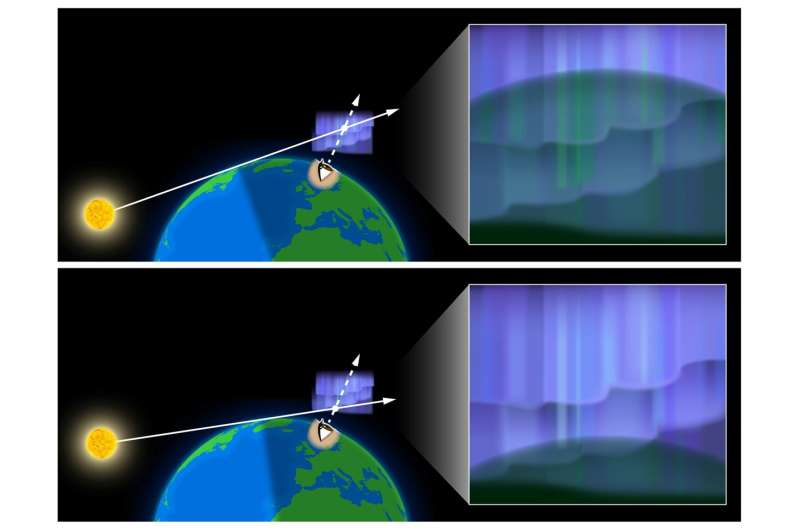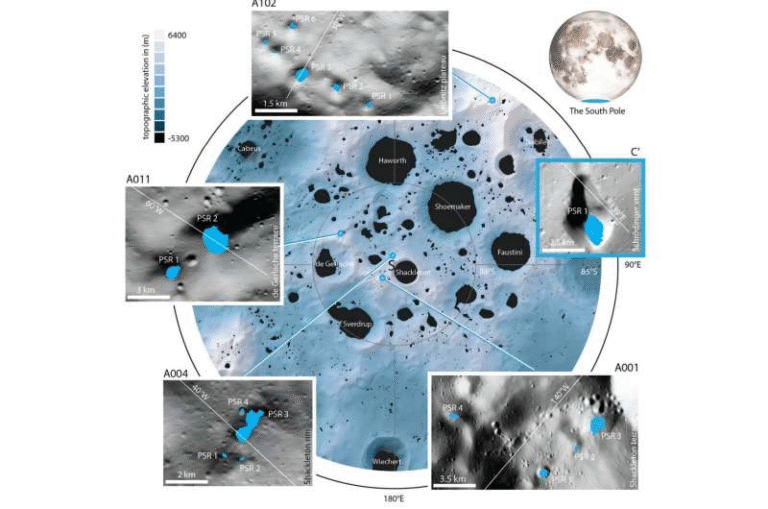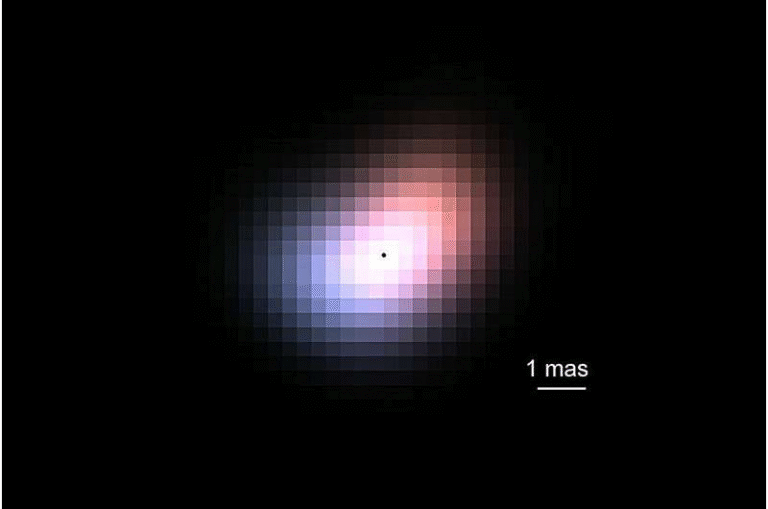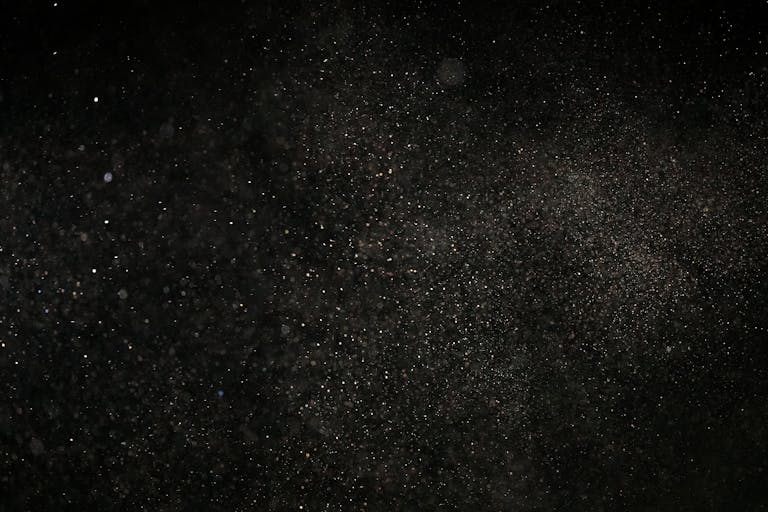Hyperspectral Camera Reveals Precise Altitude of Rare Blue Aurora During Dawn

A new study has delivered one of the most detailed measurements ever made of blue auroras, uncovering exactly how high these striking nitrogen ion (N₂⁺) emissions glow in Earth’s atmosphere during astronomical twilight. Using a hyperspectral camera system installed in Kiruna, Sweden, researchers have, for the first time, mapped the altitude distribution of blue auroral light with remarkable precision—and the results challenge long-held assumptions about how auroras form.
A Clear Look at Blue Aurora Emissions
In May 2023, the Institute for Fusion Science installed the Hyperspectral Camera for Auroral Imaging (HySCAI) at Kiruna’s Esrange site in northern Sweden. Full-scale observing began in September 2023. On October 21, 2023, the camera captured a bright formation of blue aurora during early morning astronomical twilight—a time when the Sun is still below the horizon but begins to faintly illuminate the upper atmosphere.
Auroras occur when energetic electrons from space collide with atoms and molecules—mainly oxygen and nitrogen—in Earth’s upper atmosphere. These collisions produce different colors depending on the species involved and the energy transitions excited. The rare blue glow is strongly linked to nitrogen molecular ions (N₂⁺), especially a well-known emission at 427.8 nm.
During typical nighttime conditions, the strongest N₂⁺ emissions are expected around 130 km altitude. But because the October observation happened during dawn twilight, conditions were ideal for something new: tracing how sunlight gradually illuminates downward into the auroral region. This natural downward sweep of sunlight acted as a scanning tool for measuring auroral height in a way never done before.
How Researchers Estimated the Aurora’s Height With One Camera
Traditionally, determining auroral altitude requires two or more cameras placed far apart, capturing stereo images for triangulation. Scientists have always assumed this was the only reliable approach.
But the team made use of a clever technique inspired by lab-based plasma physics experiments.
As dawn progresses, sunlight first touches the highest layers of the atmosphere. That sunlit boundary—called the terminator—slowly descends. When sunlight reaches a layer containing N₂⁺ ions, those ions scatter sunlight, producing a measurable boost in the 427.8 nm emission. By tracking the timing and location of this increasing brightness within the camera’s field of view, researchers could tell precisely which altitude the sunlight was hitting at that moment.
Because the hyperspectral camera captures extremely fine wavelength details—far more precise than traditional filtered imaging—it can separate faint auroral light from reflected sunlight and resonant scattered light. This spectral discrimination is essential during twilight, when background light is strong.
By analyzing how fast the blue aurora’s brightness increased at different angles and at different moments, the team reconstructed a vertical profile of the N₂⁺ emission.
The peak emission was found at approximately 200 km, far higher and far stronger than expected.
What Makes This Discovery Important
The finding surprised researchers because most models place strong N₂⁺ auroral emissions much lower in the atmosphere. Theoretical calculations and earlier observations usually suggest 120–160 km, especially under nighttime conditions.
But this new dawn-time observation reveals a peak at 200 km, meaning:
- N₂⁺ ions may be far more abundant at high altitudes than previously thought.
- Auroral processes during twilight behave differently from nighttime auroras.
- Existing ionospheric models may be underestimating ion transport or production mechanisms at high altitudes.
Some potential explanations include:
- Enhanced upward flow of N₂⁺ ions.
- Production of ions at high altitudes through charge-exchange interactions involving oxygen ions.
- Dawn-time resonance scattering that amplifies high-altitude emissions.
This discovery directly supports earlier hints from scattered satellite and ground observations that nitrogen ions may be more widespread at high altitudes than expected.
What Makes HySCAI Special
The hyperspectral camera system used in the study includes two gratings:
- A broad-band setting covering 400–800 nm at ~2.1 nm resolution.
- A narrow-band setting covering 123 nm at ~0.73 nm resolution.
This gives HySCAI the ability to separate tiny wavelength differences and cleanly distinguish auroral emissions from background sunlight—critical during twilight studies.
Unlike standard auroral imagers that rely on interference filters, HySCAI can capture the full spectral fingerprint of emissions. This allows researchers to quantify the altitude-linked scattering behavior with a level of accuracy not possible before.
Why Twilight Matters for Aurora Research
Aurora studies rarely focus on twilight conditions because sunlight interferes with imaging. But twilight actually provides a unique opportunity:
- The descending sunlight boundary acts as a vertical probe, making it possible to match changes in brightness to specific altitudes.
- Resonant scattering is enhanced at these altitudes, helping isolate the N₂⁺ contribution.
- The method works even with a single camera, simplifying future observational setups.
These observations could help solve long-standing puzzles in ionospheric physics, such as:
- How nitrogen molecular ions form and move at high altitudes.
- The balance of particle precipitation and ion chemistry during dawn.
- How auroral processes contribute to ion outflow into the upper ionosphere and magnetosphere.
Broader Implications for Space Weather Science
Understanding the altitude and behavior of auroral emissions is more than a visual curiosity. It affects:
- Satellite drag predictions
- Radio propagation in the ionosphere
- Space weather modeling
- Upper-atmosphere chemistry
Strong ion populations at 200 km could influence energy transfer processes, electric fields, and particle flows connecting the atmosphere and near-Earth space.
This type of data is also valuable for validating or correcting atmospheric simulation tools such as the GLOW model, which predicted lower peak altitudes for N₂⁺ emissions than what was observed.
More About Blue Auroras
While green and red auroras are commonly seen at high latitudes, blue auroras are less familiar to casual observers. Blue emissions typically originate from:
- N₂⁺ 1NG transitions, especially at 427.8 nm
- Collisions of energetic electrons with molecular nitrogen
- Conditions where the atmosphere is denser than regions that produce red oxygen emissions
Blue auroras often appear lower than red and green auroras, but this new study shows that under twilight conditions, the highest emissions can shift dramatically upward. Because blue auroras require higher-energy electrons, they can reveal information about particle acceleration in Earth’s magnetosphere.
Future Research Directions
This study opens several new paths for auroral science:
- Applying the twilight method at different latitudes
- Combining hyperspectral imaging with satellites for cross-verification
- Using the technique to check existing ionospheric models
- Exploring the role of high-altitude N₂⁺ ions in ion outflow
- Expanding nighttime-to-twilight transition studies to capture more altitude variation
The researchers note that collaborations with international institutes will help refine the method and apply it more broadly across global auroral regions.
Reference
Research Paper:
Estimate of N₂⁺ Altitude Profile Using Blue Auroral Resonant-Scattering 427.8 nm Emission Observed With HySCAI During Astronomical Twilight
https://doi.org/10.1029/2025GL118375





